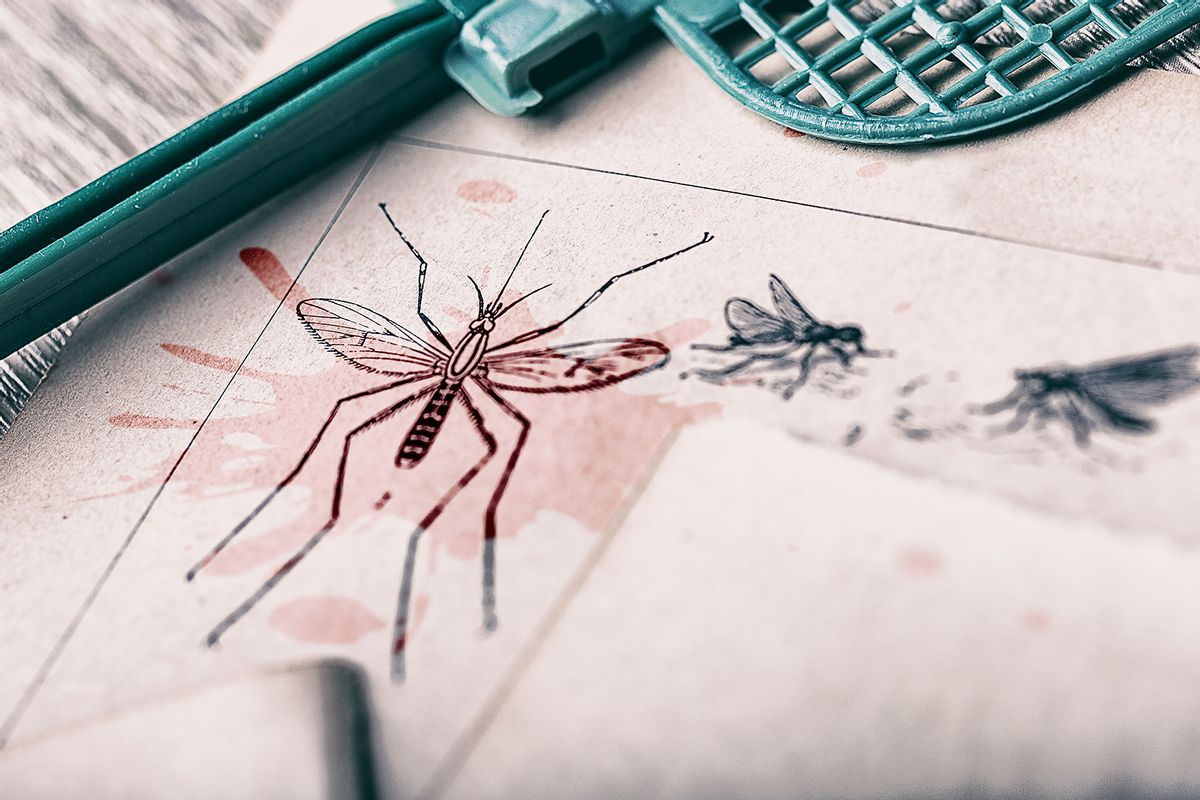Mosquito-borne illnesses are picking up speed. Experts say Americans are unprepared

This summer, public health officials in Florida issued a warning to residents to avoid mosquitoes after five cases of dengue fever were reported. Also known as “breakbone fever,” dengue fever is an illness not to be wished upon a worst enemy. Symptoms include nausea, high fever and debilitating body aches and headaches, usually behind the eyes. Rashes can occur across the body, and in severe cases, bleeding can occur in the nose or gums.
It’s one of many mosquito-borne illnesses to creep back onto U.S. soil recently after many species were eradicated in the U.S. in the 1960s. Europe is also experiencing a surge in dengue, and severe outbreaks were also reported in Bangladesh, Costa Rica and Peru. The problem is only expected to get worse as warmer temperatures due to climate change expand breeding seasons and habitat ranges for mosquitoes. It’s a matter of when, not if, future outbreaks will spread in even bigger regions across the U.S., said Sadie Ryan, Ph.D., the co-director of the Florida Climate Institute at the University of Florida.
“This is important, and it is coming,” Ryan told Salon in a video call. “We know it’s getting worse.”
Some drugmakers are working toward treatments and vaccines for mosquito-borne illnesses, with Johnson & Johnson yesterday reporting some positive results in an early study for a pill to treat dengue. However, scientists say we’re still unprepared for these outbreaks and should avoid repeating the same missteps made in the COVID-19 pandemic and the Zika outbreak in 2016.
It’s a matter of when, not if, future outbreaks will spread in even bigger regions across the U.S.
“The fact is, we’re not really ready,” said Dr. Peter Hotez, dean of the National School of Tropical Medicine at Baylor College of Medicine and co-director of the Texas Children’s Hospital Center for Vaccine Development. “Our local health departments are very spotty with their ability to do mosquito control and to even try to diagnose these viruses and mosquitoes.”
Dengue has popped up in occasional outbreaks in recent years, with cases usually located in small pockets along the U.S.-Mexico border that originate outside the country. However, 516 locally acquired dengue cases occurred in 2023 alone in Texas and Florida, according to data from the Centers for Disease Control and Prevention (CDC).
This summer, Alabama reported two cases of another potentially fatal, rare mosquito-borne illness called eastern equine encephalitis, and the U.S. reported its first cases of locally transmitted malaria in 20 years. An August CDC report found cases of West Nile virus, the most common mosquito-borne illness in the U.S., were recently at their highest since 2012.
Want more health and science stories in your inbox? Subscribe to Salon’s weekly newsletter Lab Notes.
As a result of urbanization, climate change and natural climate patterns like El Niño, mosquito-born illnesses are on the rise across the globe. Dengue had spread across 129 countries, with half the world’s population at risk as of June, according to the World Health Organization. A 2021 study in The Lancet projected that the number of people at risk for dengue could increase by between 4 and 7 million by 2070.
“Not only are [mosquitos] anthropophilic — that is, they like people — but they are also really good at exploiting things like small water pockets in garbage and using public environments in the urban landscape,” Ryan said. “We’re essentially doing what’s called ecological filtering, where we’re reducing the mosquito community, or the number of different species, down into very specific ones, and they just happen to be really good disease transmitters as well.”
Last year, the CDC initiated a public health strategy to protect against these diseases, including modernizing surveillance systems, improving diagnostic tests and developing new treatments. But a report the same year in the Journal of Medical Entomology said funding streams designed to protect against vector-borne diseases like those stemming from mosquitoes were “reactive,” which can lead to “gross inequities” that end up supporting repeat outbreaks.
Just like the COVID-19 response, the Zika response illuminated the fragmentation of the U.S. public health system.
In interviews with The New York Times, a dozen public health officials said the U.S. response to Zika left poorer nations behind while failing to issue adequate public health guidance for pregnant women, with tens of thousands of children affected as a result. Another review in the American Journal of Public Health in 2017 said it took so long for Congress to pass emergency funding that an entire mosquito season passed. Ultimately, 400,000 people were infected across the Americas.
Just like the COVID-19 response, the Zika response illuminated the fragmentation of the U.S. public health system. A Kaiser Health News analysis found more than half of states rolled back public health protections during the pandemic, and a CDC report revealed one in three public health employees faced workforce violence during the public health emergency.
Because public health measures are often deployed by local health departments, the way different regions use the CDC’s new public health strategy for surveillance and prevention will be dependent on how much funding they have, who is in charge of it and who their constituents are.
“Mosquito vector surveillance in our country is heterogeneous,” said Dr. Desiree LaBeaud, a pediatric infectious disease physician at Stanford University. “In certain places in the country, there’s less support and less resources to go toward surveillance.”
A large portion of malaria cases in Texas, Florida, Maryland and Arkansas recently documented have occurred in people who are unhoused, LaBeaud said. Just like health disparities made themselves clear in the COVID-19 pandemic, so too will they with any future mosquito-borne illness epidemics.
“I don’t think we can ignore that,” LaBeaud told Salon in a phone interview. “In order to fight infections abruptly, we’re also going to need to disrupt the status quo and actually pay attention to general inequities.”
Unlike COVID-19, these illnesses have been around for decades and there are already proven mitigation measures known to work to reduce the spread of disease. Public health officials can survey and test mosquitoes in the region to detect diseases before they infect humans and deploy fumigation or public health messaging in affected areas to alert residents to any threats.
“We’ve been in this fight for a very long time, we have a lot of tools,” Ryan said. “A lot of it is just, ‘Do you have the resources to leverage to do that?’”
“The panic of a new virus pathogen can accelerate vaccines, but unfortunately, it also accelerated the anti-vaccine movement.”
There are a few vaccines for dengue, but research done retroactively six years after one vaccine manufactured by Sanofi-Pasteur went on the market found that while it reduced severe infections in places with high transmission, it actually increased the risk for places with low transmission. This led the drug company to issue a warning that it should only be used in people who were already infected once with dengue — ultimately increasing hesitancy around vaccines and making it more challenging to develop additional vaccines as a result, Ryan said. There are also vaccines for some other mosquito-borne illnesses like malaria and yellow fever, the latter of which hasn’t returned to the U.S. but did recently jump from the Brazilian jungle to an urban city in an epidemic three times the size of outbreaks over the past 36 years.
Because most Americans are unvaccinated against these mosquito-borne illnesses, any outbreak has the potential to tear through unvaccinated populations rapidly. Yet Americans might be more hesitant to take existing or new vaccines for mosquito-borne illnesses due to increasing vaccine hesitancy.
“The panic of a new virus pathogen can accelerate vaccines, but unfortunately, it also accelerated the anti-vaccine movement,” Hotez said.
While the spread of dengue and other mosquito-borne illnesses in the U.S. and Europe could hold the promise of accelerating vaccines and new treatments for these conditions, much like how the spread of COVID-19 accelerated vaccine development, that doesn’t mean it will translate to people in countries like Bangladesh and Peru having access to them, despite these populations spending decades battling severe dengue outbreaks. After all, the U.S. was accused of hoarding COVID-19 vaccines in the initial stages of the pandemic instead of ensuring they were globally equitably distributed.
“These infections seem strange and far away and people imagine they couldn’t possibly be touched by them,” LaBeaud said. “We are all interconnected, and the way the world is changing, there aren’t even ecological barriers that used to be there before. … There are no borders here, and one of the things we learned is that we really do need to be as proactive as possible and pay attention to these emerging viruses.”
Read more
about mosquito-borne diseases



